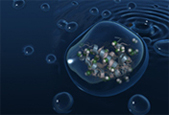 |
|
 |
|
Mutrient-sensing mechanism: the mammalian target of rapamycin (mTOR) |
|
Stress response: heat shock proteins and global chaperone network (HSR) |
- Protein quality control: ubiquitin/proteasome system (UPS)
The canonical cascade of ubiquitination involves the action of three enzymes termed E1(ubiquitin activaing enzyme), E2 (ubiquitin conjugating enzyme), and E3 (ubiquitin ligase). The E3 ligase catalyzes the final step in ubiquitin transfer in a substrate-specific manner. Despite advances in understanding the enzymatic cascade of ubiquitination, the mechanism of ubiquitin transfer to the substrate remains mysterious.
|
|
|
We are interested in determing the structural features of E3 that control the ligase activity. We attempt to engineer the single chain ubiquitin ligase such as CHIP (carboxyl terminus Hsp70 interacting protein), in order to create functional ubiquitin ligases that capable of targeting disease proteins such as protein aggregates associated with neurodegenerative diseases.
|
|
 |
|



